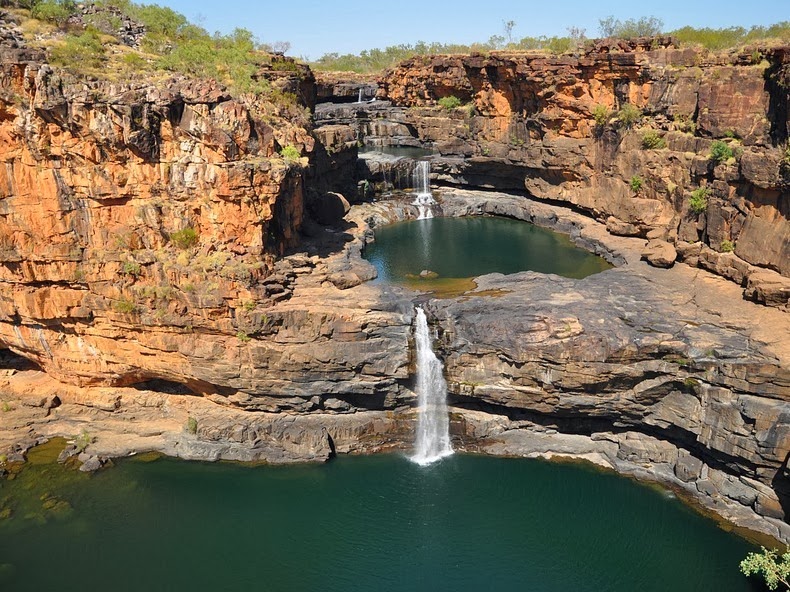Beautiful Mitchell Falls in Australia

Mitchell Falls is a beautiful four-tiered waterfall located in the remote north of the Kimberley Region in Western Australia, about 2,140 kilometers northeast of Perth. It is located within Mitchell River National Park and is one of the park’s main attractions.
Mitchell Falls can be accessed only helicopter or by foot during the dry season when the Gibb River Road is open from around May to November each year. The wet season starts from December and lasts until May during which the Mitchell Plateau area gets an average annual rainfall of some 1,600 mm. Torrential rains make rivers run wild eroding riverbeds and carrying away every thing in their path. As the torrents flood the high country, they fall in stupendous cataracts and waterfalls into deep gorges.Photographer: unknown
Like other waterfalls in the tropical regions of Northern Australia, most of the flow of the Mitchell Falls come from rain water during the wet season. The flow would then diminish as the Dry Season wore on. Mitchell Falls usually flow from the wet until anywhere between July to October.
The Mitchell Falls are accessible via a bush walk that takes a couple of hours over rough terrain. The walk is in a remote wilderness area and requires a reasonable level of fitness. A helicopter flight allows you to grasp the extreme ruggedness of the plateau, and is the only way to view many of the waterholes and surrounding area.
Beautiful Mitchell Falls in Australia

Beautiful Mitchell Falls in Australia

Beautiful Mitchell Falls in Australia

Beautiful Mitchell Falls in Australia

Beautiful Mitchell Falls in Australia

Beautiful Mitchell Falls in Australia

Mitchell Falls during the dry season. Photo credit

No comments:
Post a Comment
Note: only a member of this blog may post a comment.